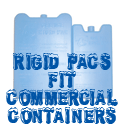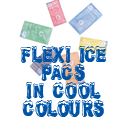Introduction
Temperature-sensitive products, such as chilled and frozen foods, live seafood, pharmaceuticals, biotechnological products and electronics, require thermal protection during their entire supply chain. This protection is often accomplished by the use of active cooling systems, such as refrigerated transport. However, there can be instances where the energy supply required to drive refrigerated equipment is not available. Typical examples include transshipping operations, the use of general air freight carriers (as opposed to leasing refrigerated air freight containers) and during loading/unloading in non-refrigerated docks. Other factors that have led the shipping industry to search for alternatives to refrigerated transport are: trade-offs between shipping costs and the volume of parcels/boxes transported, restricted availability of refrigerated equipment in some geographical regions and limited temperature ranges in refrigerated transport. Insulated transport packaging is a viable alternative solution.
Insulated containers, insulated transport packaging or “thermal packaging” options are packages containing their own source of cold (e.g. Gel Ice Pacs) and their own thermal insulation. They protect the product from environmental temperatures and avoid the need to have a power outlet or diesel engine nearby. This article discusses the most important aspects needing consideration when designing a thermal packaging option.









How Gel Ice Works